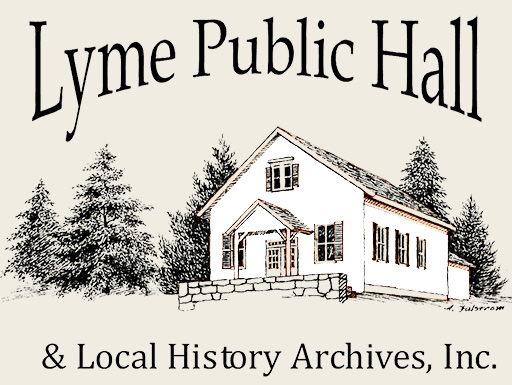
Many people in Lyme today are unaware of Lyme’s World War II memorial monument . It is seated on the ledge opposite Town Hall and Consolidated School for almost 70 years now. I hope that some background will generate appreciation of its uniqueness and significance to Lyme. Private citizens of Lyme took the initiative to form a committee and plan the memorial shortly after the end of WW II. Some of you may remember the names of these members of the committee: First Selectman Walter Hanna, Bertram Breustle (artist), Julia Marvin (wife of Probate Judge William Marvin), Mrs. Margaret Reynolds (Hamburg post office mistress), Alberta Pfeiffer, a woman architect and Henry Milliken, captain of the Lyme Minute Men, a civilian emergency defense organization formed in 1942 for Lyme and Old Lyme. He is thought to have paid for the sculpture.
A sculptor named Heinz Warneke of East Haddam was chosen to design and execute the Memorial from a large Connecticut Boulder of his choice. He proposed that it be in the form of an eagle with space for a bronze tablet on the base for the names of those from Lyme who served. The base still awaits the tablet. There are two different stories about where the large boulder came from. One says it came from Alberta Pfeiffer’s property high on Mitchell Hill. The other says it was from a pond where Beaver Brook met the Eight Mile River. It would also be interesting to know where the boulder was while it was being carved. Perhaps someone here can remember. Henry Mazer, a construction contractor from Salem Road, helped by Tom O’Connor, lifted the finished sculpture into place on the ledge; he could have told us where he picked it up to bring it here.
Why was this hard-to–see site chosen for the memorial’s permanent home in the late 1940s? A memorial for World War I veterans was already in the space in front of the Hamburg Church. And, as we can see today, there was no space between the Town Hall and Hamburg Road for a large monument. But, it happened, that the land and ledge across the road at the time belonged to Mr. Robert Winslow, the principal organizer of the Lyme Minute Men. He was willing to have the monument be located there, looking out over Hamburg Road to the Town Hall and Lyme Consolidated school.
I believe that the sculptor’s background and life experience are a significant part of the Monument story. Warneke emigrated from Germany as a young man in 1923. He adopted the U.S. as his country becoming a citizen in 1930 and went on to become a well know sculptor and educator. He was born in Germany in 1895, grew up in a small town surrounded by woodlands and wild life which he loved. His carvings, especially the those in his well-known series of wild animals, are found in parks, universities, libraries, museums and even cathedrals all around the U.S. and Europe.
Another significant influence on his stone carving is suggested by his interviews, found in the National Archives, of his experience working for an international commission after World War I, charged with creating graveyards and monuments (grave markers) for both military and civilian war-time casualties. These casualties could be of several nationalities and ethnicities within the same war zone. Thus, the design (and building) of the cemeteries and monuments were to be customized to reflect the national and ethnic traditions out of respect. Heinz Warneke envisioned and carved this unique, hometown memorial from Lyme’s own native granite rock. It represents the vigilant eagle which is our national symbol and also native to our forests and the Connecticut River.
This monument is a unique memorial and tribute to men and women from Lyme who served the nation for Lyme in World War II.
——–
Presented on Veterans Day, Nov. 11, 2016, at the Veterans Memorial, Lyme Town Green at Town Hall, by Carolyn Bacdayan, Town Historian.
